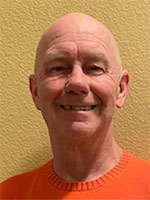Features Articles

Do multiple single-spray-nozzle conformal coaters outperform a three-nozzle machine for volume builds?
Electronics manufacturing services (EMS) providers often have to evaluate equipment selection tradeoffs on more stringent standards than original equipment manufacturers due to their needs for flexible capacity across multiple clients.

Unreasonable demands warrant blunt responses.
A young man called me. He didn’t want to call me. It was Friday. Friday is for vanishing, not confrontation. He persisted throughout the preceding week in sending emails, hoping someone on our end would engage. No one did. Not our customer service manager. Not our operations manager. Not our business/office manager. Without exception, all directed the young man to me.
Options reduced to one, he finally capitulated and called me. He was audibly nervous. He talked fast. When I was allowed the (rare) opportunity to reply, he cut me off and talked over my answer. The ensuing word jumble accomplished nothing. In exasperation, I finally admonished him, “You know, studies show that a conversation works optimally when the first party speaks and the second listens, after which the roles reverse. Can we try that as an experiment in achieving better communication?” He seemed reluctant. He kept on speaking nervously. Clearly, he did not appear comfortable with the message he was assigned to deliver.
 Never underestimate the wisdom that can come only from experience.
Never underestimate the wisdom that can come only from experience.
Spoiler alert: Some younger people may not like what I am about to say.
“Tribal knowledge” seems to be a concept hated in the world of manufacturing. Regardless of industry, it seems that leadership – and especially auditors – hate any aspect of a task based on an employee’s “experience.” Rather, the prevailing thought is that all production tasks should explicitly be the result strict adherence to detailed, well-written procedure(s) or “work instruction(s).”
The invariable question raised by those who detest relying on “knowledge,” such as certification (ISO/AS, etc.), corporate supply chain and quality auditors, is: “How do you know” the employee knows what they are doing? I find this thinking intriguing. Paradoxically, the same could be asked of the auditor.
 Communicate your improvements to keep OEMs satisfied.
Communicate your improvements to keep OEMs satisfied.
My undergraduate degree is from the University of Florida and our football season has just begun. As I write this, the Miami Hurricanes have just wiped the field with the Gators in the opening game. It is our coach’s third season. The game included errors in judgment that triggered momentum-shifting penalties on the field. Overall, the plays were unimaginative and not substantially different from the previous two years.
Coaching has been a revolving door at Florida and there are two camps of fans. One camp believes in giving the new coach time and the other feels that with no measurable improvement in play, maintaining the status quo will prolong the losing. That latter camp just got a lot bigger because this season opener showed no visible improvement over last year. Social media is ablaze with discussions about firing the athletic director and head coach.
 What the time of “intelligent interrogation” means for today’s workforce.
What the time of “intelligent interrogation” means for today’s workforce.
Artificial intelligence (AI) is transforming education and learning – changing how we learn inside and outside of school, the workplace and other formal and informal settings.
Since the introduction of generative AI (GenAI) model in November 2022 and the release of the large language models (LLM), such as ChatGPT 4 in March 2023, and its later variations including ChatGPT 4o and ChatGPT 4o Mini on top of other GenAI apps and tools, the speed of the transformation is ever increasing.
The future best-in-class learning is expected to use AI-powered assistants and AI agents that are contextually aware of and fully integrated with the learning environment to deliver personalized, one-on-one guidance and feedback to learners at scale. The anchor term herein is “at scale.” The ready availability of GenAI and its continued development and advancement will propel new teaching and learning pathways, leading to heightened efficiency and effectiveness of on-campus learning, lifelong learning, professional upskilling and reskilling.
 The outline of a PCB can serve as more than a simple perimeter.
The outline of a PCB can serve as more than a simple perimeter.
The perimeter of a PCB defines the extent of whatever electronics have to be packaged therein. The outline can also serve other functions.
Printed circuit boards come in many shapes and sizes. The first thing the outline gives us is the resulting routable area. The positional variation of each layer in the stackup requires us to compensate with a little pullback of the metal from the edge.
These days, pulling the metal back from the edge by 8 mils (0.2mm) is sufficient for most fabricators. I went to a PCB conference walking from booth to booth and asked all the fabricators what their minimum pull back from the edge would be for production quantities. A few of them, call it 20%, said they could plate the board to within 5 mils (0.127mm) of the edge. In a special case, we used lasers to define the edge and had metal just 2 mils (0.05mm) away.
The next increment is to plate right to the edge and wrap copper around to the other side. Edge plating is used in cases where we want to create a more complete Faraday cage around a circuit. It’s also possible to pass voltage and ground from the top to the bottom around the edge of the board or even using a slot within the outline of a board.
Press Releases
- Sharpen Your ESD Skills: CE3S Announces Desco’s First ANSI/ESD S20.20 Training Series for 2026
- Mycronic Secures Turnkey Solution Order from a Nordic Defense Actor
- Altus Partners with Sellectronics to Enhance Manufacturing Capabilities with PVA Delta 8 System
- ITW EAE Celebrates Major Milestone in Domestic Manufacturing Expansion


